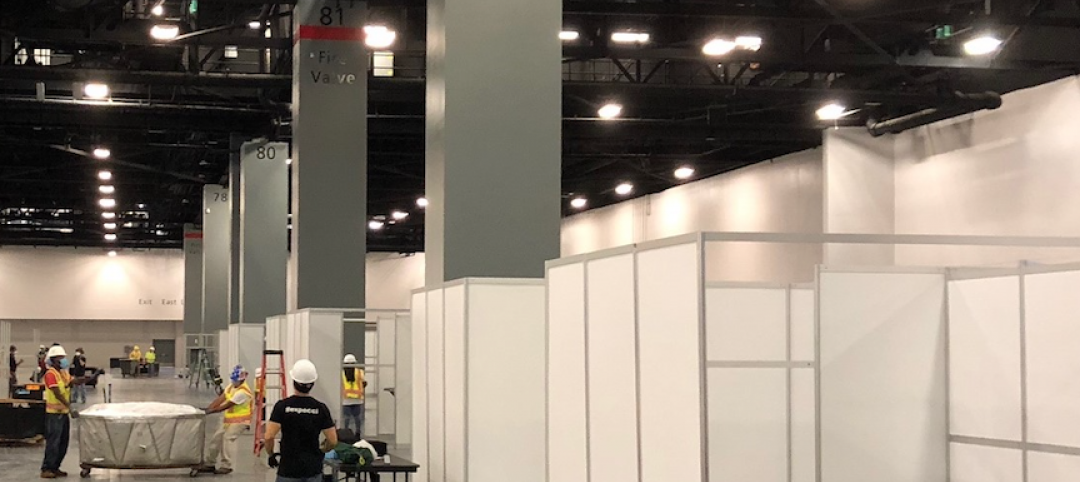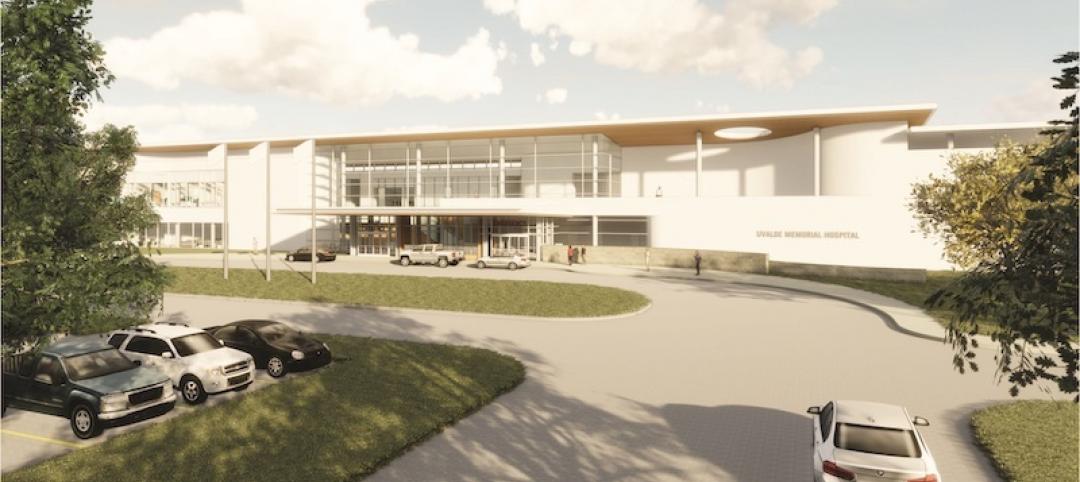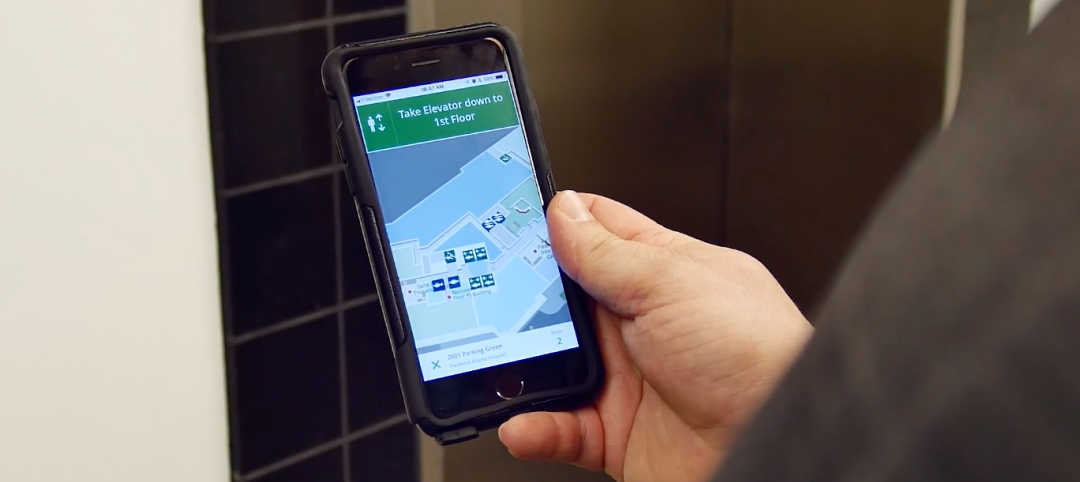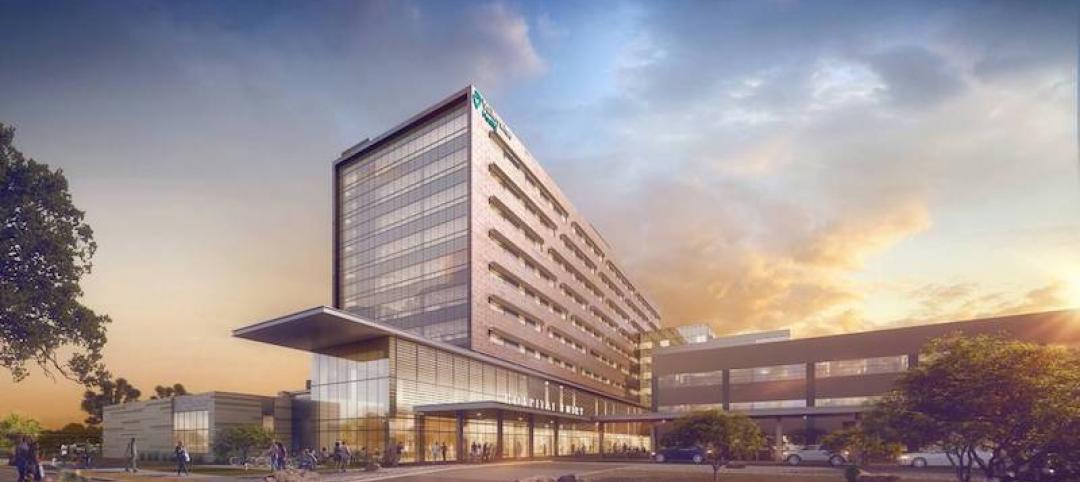On November 29, Summit Medical Group MD Anderson Cancer Center opened a 6,115-sf radiation oncology department within its campus in Berkeley Heights, N.J. This treatment center—half new construction, half renovation of a building that had been used for family services—is “important for Summit in terms of expanding its comprehensive treatment program,” says David Fernandez, Vice President of Oncology Services for Summit Health Management.
The building is also a “benchmark,” he says, in Summit’s broader relationship with Houston-based University of Texas MD Anderson Cancer Center, one of the largest cancer treatment networks in the country.
A significant trend in cancer care finds large healthcare systems branching out by affiliating with regional hospitals and medical centers to open jointly named satellite departments and clinics in suburban and even exurban markets.
“Healthcare systems are absolutely looking at cancer care as a business from an expansion standpoint, because they don’t want to lose their patient base” to a more conveniently located competitor, says John Alsentzer, Project Manager in the Nashville, Tenn., office of Smith Seckman Reid, which has been getting “quite a few RFPs for cancer centers” lately.
Satellites are driven by the needs of the outpatient community primarily, explains Andrew Quirk, Senior Vice President and National Director for Skanska USA in Nashville. “Even Memorial Sloan Kettering is making a huge effort to capture that marketplace.”
Quirk points, by way of example, to the 207,000-sf McKinley Outpatient Treatment facility, a $68 million Skanska project that opened last fall about a mile from H. Lee Moffitt Cancer Center’s campus in Tampa, Fla. “Moffitt saw the need to get out into the marketplace,” says Quirk. And by consolidating its outpatient services into one six-story building, Moffitt freed up space to expand its main hospital on the University of South Florida campus.
This outpatient center’s services include phlebotomy, transfusion, screening and diagnostic mammography, MRI, bone-density testing, surgery, a pharmacy, and genetic risk assessment.
Los Angeles-based Cedars-Sinai Hospital is improving a previously unoccupied new building in the L.A. suburb of Tarzana to a three-floor, 30,000-sf cancer center that, when it opens later this year, will include doctors offices, four pods with double-sided exam rooms, an infusion room with 30 chairs, a pharmacy, labs, and lounges.
Doss Mabe, a Partner with ZGF, the architect on this project, says Cedars-Sinai has several build-to-suit or tenant-improvement satellite cancer centers either opened or in the works around L.A. He describes these as the “front door” to the healthcare system’s cancer care.
“It’s a very different design proposition” from larger cancer centers, says Mabe. Patients often view a neighborhood facility as they would a spa. Satellites are also designed for quicker construction, as speed to market is an important competitive criterion, he says. Cedars-Sinai is also hedging its bets by leasing the Tarzana property for only 10 years.
E.W. Howell Construction was recently awarded the Southampton Hospital-Phillips Family Cancer Center, the first of its kind to be located on the east end of Long Island, N.Y. The two-story, 12,000-sf building is designed like a traditional barn that is commonly found in this market.
“Southampton wanted to bring this closer to its patients, so they won’t have to travel so far,” says Robert Timperio, Vice President and head of E.W. Howell’s healthcare division. The cancer center will include a LINAC and CT/simulation room, radiation oncology, four exam rooms on the first floor and three on the second, an infusion room with 14 chairs, conference rooms, and office space.
Timperio says Southampton Hospital is opening this satellite at a time when a number of Manhattan-based healthcare systems are coming to Long Island with outpatient centers.
The cancer center as a “franchise”
HDR did MD Anderson’s master plan, and Jon Crane, a Senior Vice President in the AE firm’s Atlanta office, reveals that the hospital’s growth strategy includes opening regional cancer centers domestically and internationally that range from 100,000 to 200,000 sf, and can handle a host of treatments.
Summit is currently collaborating with MD Anderson on a 130,000-sf outpatient facility under construction in Florham Park, N.J., that’s scheduled to open later this year. Its multidisciplinary menu of services will include radiation oncology, medical oncology, gynecological oncology, infusion, diagnostic imaging, mammography, and plastic surgery. Florham Park will also have a resource center that is accessible to patients and staff, and connects both to MD Anderson.
When asked why it chose to partner with MD Anderson, Summit’s Fernandez says the arrangement “is more like a franchise,” with specific design and programming criteria. He also says the partnership accentuates Summit’s commitment to support a consistently high level of service. “And, as we grow, they grow,” he says.
Molly Gabel, MD, Summit’s Medical Director of Radiology Services, was brought on board to help Summit set up its radiation oncology practice. She was instrumental in the design of the Berkeley Heights radiation oncology facility, which Summit submitted to MD Anderson for approval. The building took 18 months to complete.
Walking the new facility with a BD+C reporter, Gabel singles out little details, like the light-wood flooring and a closet in the hallway near the reception area, as examples of “softer” design touches that help put patients at ease.
The department is designed in a circle so that every patient passes a long nurses’ station before entering one of its three exam rooms or its treatment room. The department’s LINAC vault—one of the few in the country to combine a PET/CT scanner and High Dose Radiation machine in one room—is made somewhat less imposing by a backlit mural in the ceiling and an adjacent small outdoor garden area.
“Cancer care is a moving target, with discoveries being made all the time,” says Joseph Saphire, AIA, Partner, Saphire + Albarran Architecture, this project’s architect. “But the most important thing is still the patient experience and treating them with a great deal of respect, so they don’t feel like they’re being herded into a pen.”
The Berkeley Heights facility, with a 16-person staff, is currently handling 30-35 patients per day, with 60 being its capacity, says Fernandez.
Related Stories
Coronavirus | Apr 14, 2020
COVID-19 alert: Missouri’s first Alternate Care Facility ready for coronavirus patients
Missouri’s first Alternate Care Facility ready for coronavirus patients
Coronavirus | Apr 10, 2020
COVID-19: Converting existing hospitals, hotels, convention centers, and other alternate care sites for coronavirus patients
COVID-19: Converting existing unused or underused hospitals, hotels, convention centers, and other alternate care sites for coronavirus patients
Coronavirus | Apr 9, 2020
COVID-19 alert: Robins & Morton to convert Miami Beach Convention Center into a 450-bed field hospital
COVID-19 alert: Robins & Morton to convert Miami Beach Convention Center into a 450-bed field hospital
Coronavirus | Apr 4, 2020
COVID-19: Construction completed on first phase of Chicago's McCormick Place into Alternate Care Facility
Walsh Construction, one of the largest contractors in the city of Chicago and in the United States, is leading the temporary conversion of a portion of the McCormick Place Convention Center into an Alternate Care Facility (ACF) for novel coronavirus patients. Construction on the first 500 beds was completed on April 3.
Coronavirus | Apr 1, 2020
TLC’s Michael Sheerin offers guidance on ventilation in COVID-19 healthcare settings
Ventilation engineering guidance for COVID-19 patient rooms
Healthcare Facilities | Mar 29, 2020
A ‘roadmap’ for building hospitals in rural and underfunded markets
Hoar Construction’s formula emphasizes preconstruction planning and input from healthcare workers.
Healthcare Facilities | Mar 27, 2020
Designing healthcare for surge capacity
We believe that part of the longer-term answer lies not just with traditional health providers, but in the potential of our cities and communities to adapt and change.
Modular Building | Mar 17, 2020
Danish hospital is constructed from 24 steel frame modules
Onsite construction was completed in two weeks.
Healthcare Facilities | Mar 9, 2020
Mobile wayfinding platform helps patients, visitors navigate convoluted health campuses
Gozio Health uses a robot to roam hospital campuses to capture data and create detailed maps of the building spaces and campus.
Healthcare Facilities | Feb 28, 2020
Valleywise Health Medical Center breaks ground in Phoenix
Cuningham Group Architecture and EYP designed the project.

















